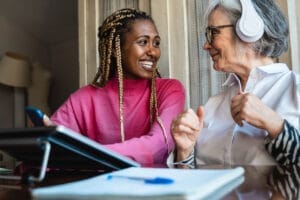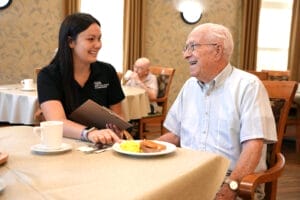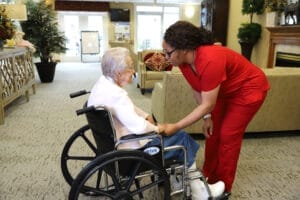In the United States, there are around 7 million stroke survivors living with the effects of stroke, which is the leading cause of disability in adults. However, depending on the severity of the stroke, with the proper rehabilitation 10 percent of stroke survivors recover with no impairments, while 25 percent recover with just minor impairments.
Occupational Therapy for Stroke Rehabilitation
Occupational therapy plays an important role in a stroke recovery rehabilitation program. After a stroke, survivors need to relearn some everyday abilities to live as independently as possible, and an occupational therapist will work directly with them to determine what activities are most meaningful to their lifestyle. Activities of daily living (ADLs) occupational therapy can improve your ability to perform ADLs, including bathing, dressing, eating, grooming, and even driving. These activities have a huge impact on overall quality of life and independence.
Occupational therapy can take place in a variety of locations: the survivor’s own home, inpatient therapy in a hospital or subacute care unit, or outpatient therapy at a rehabilitation center. Some of the additional ways of occupational therapists and occupational therapy for stroke recovery benefits the survivor include:
- Providing ongoing retraining in self-care skills as needed
- Evaluating the stroke survivor’s home for potential safety hazards
- Adapting the environment to meet the stroke survivor’s personal needs
- Training in the use of assistive devices
- Building the survivor’s strength, balance and endurance
- Decreasing the burden on a family caregiver
- Providing activities that rebuild self-confidence
- Developing coping strategies to support mental health and well-being
- Teaching healthy lifestyle habits and routines
Every stroke survivor is different, so every occupational therapy program will be different and tailored to meet their individual needs.
One study found that stroke survivors who received occupational therapy are less likely to continue to decline in health, and are more likely to remain independent as their ability to perform ADLs and other tasks improves following treatment.
Preventing Stroke is Key
Every 40 seconds, someone in the United States suffers a stroke. However, while some factors that can increase the risk for stroke cannot be changed, like age, gender, race and family history, up to 80 percent of strokes are preventable.
How can a stroke be prevented? First, if you’re living with chronic health conditions like diabetes, high blood pressure, have circulation problems or certain heart conditions like coronary artery disease, it’s vital to properly manage them. See your doctor regularly and take the necessary medications and procedures to control your conditions.
Secondly, change up your lifestyle and incorporate healthy habits, like a eating a nutritious, well-balanced diet and getting plenty of regular exercise. If you smoke, it’s time to quit, and only drink alcohol in moderation.
Additionally, be able to recognize the signs of stroke so medical treatment can be given right away. Every minute counts when it comes to treating a stroke for the best outcome possible.
American Senior Communities offers quality rehabilitation for seniors in our Moving Forward Rehabilitation program throughout our locations. Contact us today to request more information.



